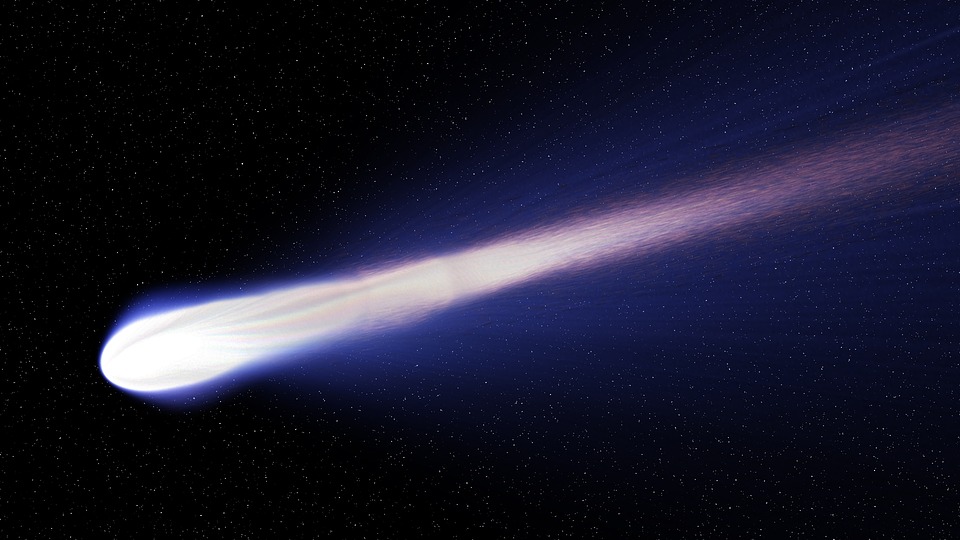Being able to see comets is not as anticipated compared to seeing meteor showers, which occur at least once every month by a different group of meteorites. Now, experts believe one particular comet, the Atlas comet, will shine as bright as the moon when it approaches the sun.
Express reports that the comet, which is also referred to as C/2019 Y4, is expected to shine brightly when it gets closer to the Sun. The comet is currently within the vicinity of Mars’ orbit and is expected to go nearer by the latter part of May. By this time, ATLAS will be 0.25 astronomical units away from the Sun, but the distance will shorten the closer it gets.
When ATLAS approaches the Sun, scientists believe that the comet will shine as bright as a waxing crescent moon. According to the Space Weather website, “The comet is about as bright as an 8th or 9th magnitude star. That’s too dim to see with the naked eye but consider this: The comet is hundreds of times bigger than astronomers predicted when it was discovered 4 months ago...” and that by May when the comet is closer to the Sun, the comet will be as bright as a 1st magnitude star or a waxing crescent moon.
For those who already want to see a glimpse of ATLAS before May, astronomers or space enthusiasts will already be able to see the comet with a mid-sized backyard telescope. It is also encouraged to observe the comet as it gets brighter the closer it gets to the Sun and look out for possible outbursts that may happen in the coming weeks due to the volatile material within the comet getting exposed by the increasing sunlight.
Although comets are usually observed, there is a possibility that a comet may decide to strike Earth instead of passing by it. Asteroid and comet expert Dr. Steve Chesley previously revealed what makes a comet dangerous, especially if ever it decides to strike. Dr. Chesley noted how comets usually were seen as a bad omen all throughout history and explained that because comets move faster than asteroids, they will cause more damage.
Aside from the speed, the size of the comet is also a concern, as Dr. Chesley revealed that comets coming from deep space would most likely be much larger.



 What are the chances an asteroid will impact Earth in 2032?
What are the chances an asteroid will impact Earth in 2032?  What’s the shape of the universe? Mathematicians use topology to study the shape of the world and everything in it
What’s the shape of the universe? Mathematicians use topology to study the shape of the world and everything in it  Astronauts on NASA’s Artemis mission to the Moon will need better boots − here’s why
Astronauts on NASA’s Artemis mission to the Moon will need better boots − here’s why  FDA Approval of Opdivo Injection Sparks Hope for Cancer Patients with Revolutionary Treatment Update
FDA Approval of Opdivo Injection Sparks Hope for Cancer Patients with Revolutionary Treatment Update  FDA Vaccine Chief Peter Marks Resigns Amid Controversy Over Transparency
FDA Vaccine Chief Peter Marks Resigns Amid Controversy Over Transparency  AstraZeneca’s Imfinzi Gets US Approval for Bladder Cancer Treatment
AstraZeneca’s Imfinzi Gets US Approval for Bladder Cancer Treatment  Most of us trust scientists, shows a survey of nearly 72,000 people worldwide
Most of us trust scientists, shows a survey of nearly 72,000 people worldwide  Explosive CIA Whistleblower Claims Havana Syndrome Victims Face Cancer, Dementia, and Government Betrayal
Explosive CIA Whistleblower Claims Havana Syndrome Victims Face Cancer, Dementia, and Government Betrayal  Firefighting planes are dumping ocean water on the Los Angeles fires − why using saltwater is typically a last resort
Firefighting planes are dumping ocean water on the Los Angeles fires − why using saltwater is typically a last resort  Bill Gates’ Shocking New Malaria Solution Unveiled as Genetically Modified Mosquitoes Turn Into Flying Vaccinators
Bill Gates’ Shocking New Malaria Solution Unveiled as Genetically Modified Mosquitoes Turn Into Flying Vaccinators  Asteroid has a very small chance of hitting Earth in 2032, but a collision could devastate a city
Asteroid has a very small chance of hitting Earth in 2032, but a collision could devastate a city  Scientific misconduct is on the rise. But what exactly is it?
Scientific misconduct is on the rise. But what exactly is it?  A new study reveals the structure of violent winds 1,300 light years away
A new study reveals the structure of violent winds 1,300 light years away  It’s science, not fiction: high-tech drones may soon be fighting bushfires in Australia
It’s science, not fiction: high-tech drones may soon be fighting bushfires in Australia  Earth is bombarded with rocks from space – but who gets to keep these ultimate antiques?
Earth is bombarded with rocks from space – but who gets to keep these ultimate antiques? 






























